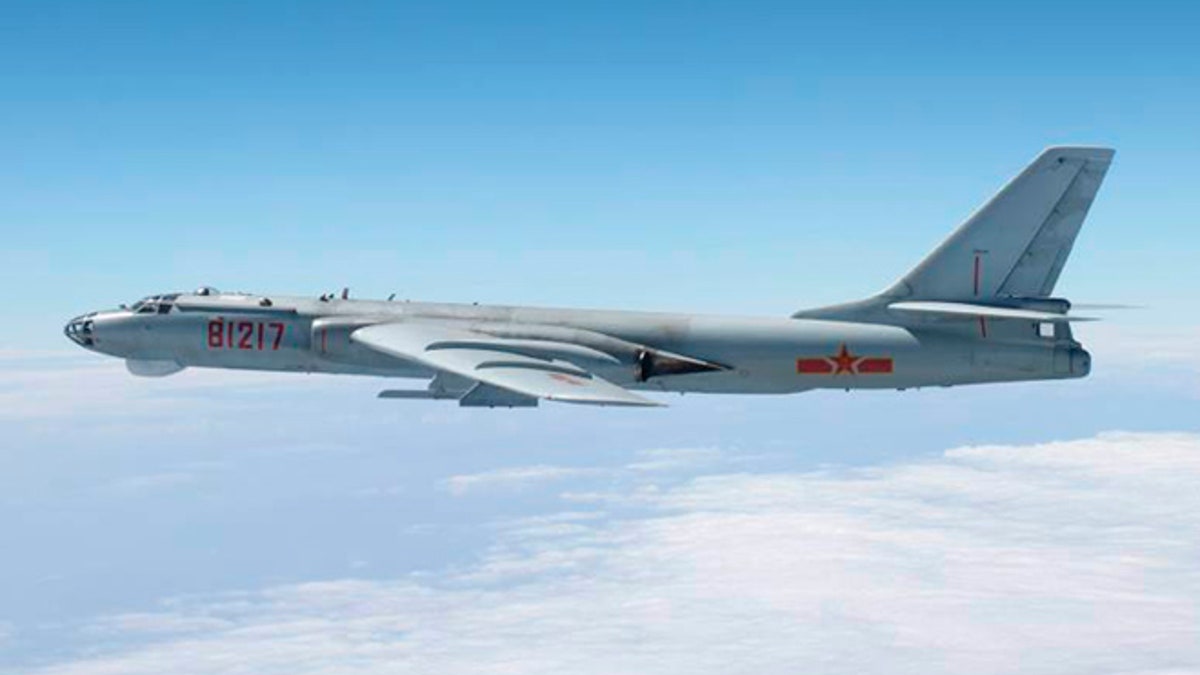Officials: China flew nuclear-capable bombers around Taiwan
Lucas Tomlinson reports from The Pentagon
China flew a long-range nuclear-capable bomber outside China for the first time since President-elect Donald Trump spoke with the president of Taiwan, two US officials told Fox News.
The dramatic show of force was meant to send a message to the new administration, according to the officials. It marks the second time Beijing flew bombers in the region since Trump was elected.
Even more concerning for the Pentagon, China has been seen by American intelligence satellites preparing to ship more advanced surface-to-air missiles to its contested islands in the South China Sea.
Trump's call with Taiwan's President Tsai ling-wen broke decades- long protocol after American leaders stopped communicating directly with the Taiwan president in 1979, when diplomatic ties were severed and the United States shifted to a new "one-China" policy. China protested Trump's call with President Tsai.
MANILA SAYS WILL NOT HELP US ON PATROLS IN SOUTH CHINA SEA
The Chinese H-6 bomber flew along the disputed "Nine-Dash line" Thursday, which surrounds the South China Sea and dozens of disputed Chinese islands, many claimed by other countries in the region.
The Pentagon was alerted to the Chinese flight Friday. It was the first long-range flight of a Chinese bomber along the U-shaped line of demarcation since March 2015, according to the officials.
Over the summer, Chinese bombers flew over the South China Sea and the contested islands, but they did not fly nearly as far as this one, the officials said.
At various points in recent long-range flights, Chinese fighter jets provided escorts to the single Chinese bomber.
In recent days, U.S. intelligence satellites have spotted components for the Chinese version of the SA-21 surface-to-air missile system at the port of Jieyang, in southeast China, where officials say China has made similar military shipments in the past to its islands in the South China Sea.
TRUMP'S TAIWAN CALL, TWEETS POINT TO FLASHPOINTS WITH CHINA
In February, Fox News first reported that China had deployed an advanced surface-to-air missile system, the HQ-9, to Woody Island, a contested island in the Paracel Island chain in the South China Sea, also claimed by Taiwan and Vietnam.
The HQ-9 is based on the Russian S-300 missile system and has a range of roughly 125 miles.
The Chinese SA-21 system, based on the more advanced Russian S-400, is a more capable missile system than the HQ-9.

FILE: A Chinese military plane H-6 bomber flies through airspace in southern Japan (Reuters)
Depending on the types of missiles used, it could extend the range up to 250 miles and target not only aircraft, but ballistic missiles as well.
The head of the U.S. military's Pacific Command, Admiral Harry Harris has repeatedly warned in the past year about China's continued military build-up or "militarization" of the South China Sea.
In October, a US Navy destroyer sailed close to Woody Island in what the Pentagon calls a "freedom of navigation" operation. The Chinese called the act "provocative." It was the fourth such operation by the U.S. Navy in the past year.
China has constructed over 3,000 acres of land atop reefs in the South China Sea in the past few years. It now has three runways and has sent bombers and fighter jets to a number of them.
TRUMP REMAINS ON DEFENSIVE AFTER CALL WITH TAIWAN PRESIDENT
In August, satellite photos appeared to show China making progress on at least two dozen hardened concrete hangers in order to land Chinese bombers and fighter jets as well as in-flight refueling planes, greatly expanding the reach of the Chinese military.
The photos were collected and studied by the Center for Strategic and International Studies (CSIS), a Washington-based think-tank. They showed the construction on China's man-made islands at Fiery Cross, Subi and Mischief reefs.

